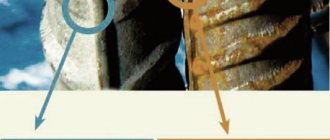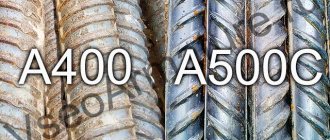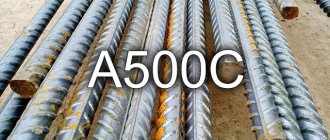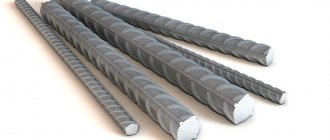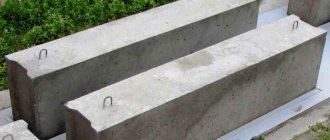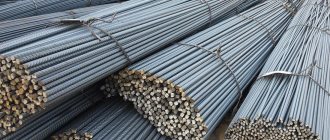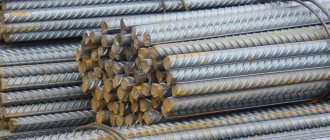- Long products
April 6, 2020
865
12 mm reinforcement is actively used in the construction industry in the construction of structures made of prefabricated and monolithic reinforced concrete. It is also used for other purposes, which are quite varied and versatile. Let's take a closer look at this type of rolled metal, tell you about the features of its choice, advantages and application.
12 mm reinforcement - definition and current regulatory documents
12 mm rebar is one of the types of long products. More precisely, it is a whole group of products. Its common feature is a nominal diameter of 12 millimeters and a circular cross-section of the profile (some ovality is allowed).
This definition includes a wide range of materials, the production of which is regulated by a number of regulatory documents, including:
- GOST 34028-2016, replaced two regulatory acts at once - the first GOST 5781-82 and the second GOST 10884-94;
- the range of production of composite reinforcement is indicated by GOST 31938-2012;
- GOST P 52544-2006, denotes the conditions for the production of such types of rolled metal as A500S fittings, B500S fittings.
And these are just the basic regulations indicating the range of products. In fact, the regulatory framework is much broader and in addition includes many other regulatory acts. Moreover, the conversation is not only about GOSTs, but also technical conditions (TU), codes of practice (SP) and others. This does not take into account the international regulatory framework.
Material of manufacture
Previously, 12 mm reinforcement was made exclusively from carbon (regulated by GOST 380-2005) and low-alloy steel grades. In other words, this is a classic black rolled metal product with a round cross-section. The most actively used grades of carbon steel (semi-quiet, calm, sometimes boiling). Low-alloy steel grades are also actively used. Let's note 25G2S, in addition to this 32G2Rps and very often 35GS.
Now, in terms of brands used, everything has become sufficient
variably. If GOST 5781-82 clearly indicated the technical conditions and grades of steel, now this is not the case. GOST 34028-2016 provides only the chemical component composition of steel for a certain class of rolled products. Its yield strength is taken into account. Steel is selected for the manufacture of products by the manufacturer, taking into account the presence of individual elements in a certain proportion.
In 2012, GOST 31938-2012 standards came into force, and an alternative appeared in the form of composite reinforcement. And here everything is quite versatile. It all depends on what type of reinforcing filler is used.
Keep in mind that the performance characteristics of the product, and therefore its areas of use, directly depend on the material of manufacture. The fact is that reinforcement 12 for the foundation must have its own characteristics, and for the reinforcement of walls and ceilings, its own.
GOST requirements: B500 fittings, features of its manufacture
A500C reinforcement is successfully used in compressed elements. At the same time, the quality of concreting increases due to a reduction in the number of metal structures in the columns. Profiles can be used in projects where sections of classes АІ and АІІІ are specified. An analogue of the universal fittings A500C can be the fittings B500.
The B500C fittings meet European standards in terms of the chemical and technological characteristics of the raw materials and structure. The main advantage is flexibility. The high degree of plasticity of reinforcement structures prevents the destruction of buildings. Reinforcing products of this class in the Russian Federation are produced in accordance with GOST R 52554. They are intended for the construction of structures made of lightweight and weighted concrete.
Such buildings are used in aggressive environments. Reinforcement is used both in the form of independent rods and in frames and welded products. According to its characteristics, B500С is an effective substitute for fittings marked A400, A400C, A240. The B500С fittings have the following basic parameters:
Class B500 fittings meet all European standards.
- is produced in accordance with European Union standards, which makes it possible to use it on European equipment;
- does not curl due to the absence of stripes;
- elongates by 1.4%, withstanding loads over 3%;
- characterized by excellent weldability.
As for the pricing policy, it is different and depends on the characteristics of the fittings and the volume of required products.
Reinforcing steel class and its profile
Let's move on. An important criterion is the class of the type of rolled metal being considered. Pay attention to one important point. Previously, according to GOST 5781-82, the product class was determined based on mechanical properties. There were six classes in total, they were designated by Roman numerals and the letter A, which indicated the type of rental. This ranged from AI to A-VI. And then they began to use such a parameter as the yield strength (measured in N/mm²).
GOST 34028-2016 specifies exactly these parameters. In other words, if previously the products were designated as 12 A3 fittings, now they are designated as 12 A500C fittings. We have indicated the most common class, but everything is much broader. Some people still don’t know the new label well. Therefore, we denote the correspondence:
- A240 is formerly AI;
- A300 used to be a rarely used type of A-II grade metal products;
- A-III now corresponds to A400, A500;
- A600 formerly known as A-IV;
- AV correlates with A800;
- A1000 is the highest class of fittings, previously produced as A-VI.
When choosing reinforcing steel with a diameter of 12 mm, pay close attention to its class. We hope the classes are clear. Performance characteristics and choice directly depend on the product class. Let us separately note one important point related to the direction of application. The bottom line is that now there are two directions for using the type of metal products under consideration (we are talking about reinforcing steel). The first is the reinforcement of monolithic and prefabricated reinforced concrete structures. The second is the reinforcement of prestressed reinforced concrete structures. In the second case, special fittings are used, labeled as Ap, that is, Ap600. Now regarding the profile. There are two main options. The first is a smooth profile, such 12 mm reinforcement is similar to a classic rod. Typically this is class A240/AI. The second is a periodic profile.
The adhesion of rolled steel to concrete in reinforced concrete prefabricated and/or monolithic structures of various configurations depends on the shape of the profile. Pay close attention to this. If, for example, reinforcement 12 is used for the foundation. In this case, when it has a smooth profile, its use as working reinforcement is not entirely appropriate. Here you need 12 corrugated fittings, class not lower than A3 (A400).
A500S fittings: GOST, key parameters and characteristics
Since the third category is the most common, which class of reinforcement (A400 or A500) to choose is up to the designers, who take into account all the nuances of construction work. Speaking about the structural features of this type, you should pay attention to GOST reinforcement A500. It regulates the production of a round profile having two ribs along the rod and parallel rows of crescent-shaped protrusions across. Moreover, they do not intersect with paired ribs along the body of the rod.
Reinforcement class A500 is the most universal, it is produced in coils and rods.
The profile has high ductility and strength characteristics during the rolling process. A500 reinforcement bars have a minimum length of 6 m, and a maximum length of 25 m. The optimal length of the rods is 12 m. According to the assortment table, A500S reinforcement is made from high-quality marked steel St3SP, St3PS and St3GPS. The material has excellent weldability, but this is not its only advantage.
On a note! A500C fittings can be connected using electric arc welding machines. This advantage is indicated by the letter C in the profile marking. The quality of welding is reduced by the minimum presence of alloying elements.
The positive properties of such fittings are as follows:
- increased degree of strength and flexibility, absence of weak points that could lead to destruction of the reinforcement;
- relatively low production cost and, as a consequence, affordable cost of reinforcement per ton;
- the specific gravity of A500 reinforcement implies significant savings in steel volumes during the manufacturing process.
Class A500 is used not only in residential construction, but also in commercial and industrial construction.
Production technology
For the most part, the type of long products we are considering is produced using hot rolling technology. Special rolling mills are used. We will not delve into the specifics of the production process; we will tell you briefly. A billet is taken, heated to a certain temperature, then fed into a rolling mill. There, reinforcement with a circular cross-section of the required diameter of 12 mm is formed. But it's not that simple. Firstly, rolling mills differ from each other. And this determines the quality of rental. Secondly, now additional processing of reinforcement after rolling is often used. There are several technologies, let's start with thermal hardening. Previously, this type of product was marked with the At index and was regulated by GOST 10884-94.
Thermal hardening is the so-called thermomechanical high-temperature treatment with hot deformation of the workpiece (hardening) and forced cooling. Sometimes auxiliary operations are also used. Among them are tempering itself or tempering, additional mechanical processing.
The next technology is the so-called cold cutting followed by straightening the skeins into rods. A popular technique used in the reinforcement of reinforced concrete structures and the arrangement of maps.
Keep in mind that you can use manufacturing technology that differs from those indicated earlier. Therefore, pay attention to what standard the metallurgical enterprise relies on when manufacturing fittings. Regardless of the production technology, there must be markings.
Let's continue. There is one interesting GOST R 52544-2006. It is interesting because it defines another manufacturing technology - cold deformation of steel. This is volumetric cold stamping of long products. Such 12 mm fittings are marked in accordance with the specified regulatory document as B500C. C – indicates a set of requirements, more about it below. But B is precisely the designation of the class of cold-worked steel. The performance characteristics of metal products largely depend on manufacturing technology.
Reinforcement: weight and various options for calculating it
The weight of reinforcement is calculated in different ways:
- according to standard weight data;
- taking specific gravity as a basis;
- using an online calculator.
The required number of rods according to the standard weight is determined using the above weight table in relation to the linear meter. This is the simplest calculation option. For example, let’s calculate the weight of reinforcement 14.
How much a meter of reinforcement weighs is something both designers and builders of buildings and structures made of reinforced concrete need to know.
The main condition for carrying out such calculations is the presence of an appropriate table. The calculation process itself (when drawing up a construction plan, taking into account the construction of the reinforcing mesh) includes the following stages:
- select the appropriate diameter of the rods;
- calculate the footage of the required reinforcement;
- multiply the weight of one meter of reinforcement of the corresponding diameter by the number of rods required.
For example, for construction it is expected to use 2300 meters of reinforcement 14. The weight of 1 meter of rods is 1.21 kg. We carry out the calculation: 2300 * 1.21 = 2783 kilograms. Thus, to complete this volume of work, 2 tons 783 kilograms of steel rods will be required. The number of rods of the corresponding diameter in one ton is calculated similarly. The data is taken from the table.
Calculations based on specific gravity using the example of calculating the weight of a meter of reinforcement 12
The method of calculating specific gravity requires special skills and knowledge. It is based on a formula for determining mass using quantities such as the volume of an object and its specific gravity. This is the most complex and time-consuming option for calculating weight. It is applicable only in cases where there is no table with standards available and the possibility of using an online calculator is excluded.
When independently calculating the volume of reinforcement, you need to take into account the fact that the rod has a cylindrical shape
These calculations can be clearly seen using the example of determining the weight of 1 meter of 12 mm reinforcement. First, you need to remember the formula for calculating weight from the physics course, according to which mass is equal to the volume of an object multiplied by its density, that is, specific gravity. For steel, this figure corresponds to 7850 kg/m³.
The volume is determined independently, taking into account the fact that the reinforcement bar has a cylindrical shape. In this case, knowledge of geometry will come in handy. The formula says: the volume of a cylinder is calculated by multiplying the cross-sectional area by the height of the figure. The cross section of a cylinder is a circle. Its area is calculated using another formula, where the constant number Pi with a value of 3.14 is multiplied by the radius squared. Radius is, as you know, half the diameter.
The procedure for calculating the weight of reinforcement 12 mm per meter, the length of the entire rod
The diameter of the reinforcing bars is taken from the construction plans and calculations. It is better not to measure it yourself to avoid errors. We determine how much one meter of 12 mm reinforcement weighs. Thus, we find that the radius is 6 mm or 0.006 m.
If it is necessary to calculate the mass of a specific reinforcement bar, then the area of the circle is multiplied by its length
Helpful advice! The easiest way to calculate is to use special programs (or an online calculator). To do this, enter into certain cells the given weight of the reinforcement in tons, the number of the corresponding profile and the length of the rod in millimeters. The standard length of the rods is 6000 or 12000 mm.
The sequence of independent calculations using the formula is as follows:
- Determination of the area of a circle: 3.14*0.006²=0.00011304 m².
- Calculation of the volume of a meter of rods: 0.00011304*1=0.00011304 m³.
- Calculation of the weight of reinforcement 12 in 1 meter: 0.00011304 m³*7850 kg/m³=0.887 kg.
If the obtained result is checked against the table, we will find that the data corresponds to state standards. If it is necessary to calculate the mass of a particular rod, then the area of the circle is multiplied by its length. In general, the calculation algorithm is similar.
The complete procedure for calculating the weight of 1 meter of reinforcement 12, represented by a mathematical expression, will look like this:
1m*(3.14*0.012m*0.012m/4)*7850kg/m³=0.887 kg.
To independently calculate the weight of reinforcement 12 mm per meter, you need to use a certain formula
The result is identical to the previous one. Depending on the length of the reinforcement, the corresponding value is substituted into the formula and the weight is calculated from it. The weight of the entire mesh can be calculated by multiplying the value obtained for 1 m² by the required number of square meters in the reinforced frame.
Calculation of the weight of reinforcing wire per square meter
The reinforcing wire meets the requirements of GOST 6727-80. Low carbon steel is used for its production. The diametral values of ordinary wire are 3, 4 and 5 mm. The assortment has two classes: BI - with a smooth surface and VR-1 - material from a periodic profile.
The weight of the wire is calculated in accordance with special standards and data given in the table:
| Wire diameter, mm | Weight of one meter, g |
| 3 | 52 |
| 4 | 92 |
| 5 | 144 |
You can calculate the weight for a specific case using the following algorithm. In order to determine the mass of one hundred meters of reinforcing wire with a diameter of 4 mm, it is necessary to multiply the specific gravity by the footage. The calculation will look like this:
92*100 = 9200 g (or 9 kg 200 g).
The reverse calculation can also be done. For example, a coil of wire with a diameter of 4 mm weighs 10 kg. To determine the footage, you need to divide the total mass by the specific gravity. The calculation looks like this: 10/0.092 = 108.69 meters.
Low carbon steel is used to produce reinforcing wire
The following methods are used to calculate the weight of the reinforcing mesh. For example, the grid dimensions are 50x50x4. The square meter area includes 18 rods of 1 m each. Thus, a total of 18 m of reinforcement 6 is obtained, the weight of which is 0.222 kg/m. The linear meter of wire in the structure is calculated as follows: 18*0.222=3.996 kg/m². Approximately 1% should be added to account for welding errors. We'll get a full 4 kilograms.
Set of requirements
Since we promised, we’ll tell you about another important parameter that needs to be taken into account when buying the type of fittings in question. It can be manufactured with so-called standard and additional requirements. For example, fittings 12 A500C with additional requirements, and 12 A500 with standard ones. We hope you caught the difference? Yes, indeed, there is an index after the yield point. It is he who indicates the presence of additional requirements, their characteristics; we will briefly indicate the main ones:
- C – welded, such rolled products can be easily welded, without certain conditions and the use of specific types of welding;
- K – with a high degree of resistance to so-called corrosion cracking;
- plasticity, its categories (for example, H or E);
- the degree of resistance to repeatedly repeated, so-called cyclic loads, when it is increased, the product has the index “U”;
- resistant to spontaneous changes in stress in parts pre-loaded during constant volumetric deformation, is marked with the index “P”.
The scope of application and installation technology depend on the presence or absence of additional requirements and their specificity. Among other things, these parameters predetermine the structural features of the object being built and its elements.
Reinforcement classes: product range by strength and mechanical parameters
The word assortment (or assortment) in French sounds like assortir and means “to select,” that is, to sort into varieties in accordance with typical characteristics.
Reinforcement differs in various parameters, such as dimensions, profile and material for manufacture.
These parameters include:
- material used to manufacture products;
- reinforcement dimensions, such as size, diameter, surface type;
- profile.
On a note! Products are packaged according to their diameter classification. Reinforcing metal products up to 10 mm are sold in coils, and above this parameter they are packaged in rods of a certain length.
Reinforcement is used in construction work in the form of rods, mesh, wire or frame. Based on its purpose, it is divided into structural, anchor, installation or working. This takes into account the presence or absence of tension, as well as the need to strengthen the structure in a certain area. Reinforcement can be longitudinal or transverse.
Reinforcement is also marked and classified according to other characteristic features, but first of all, the diameter of the reinforcement is taken into account, as well as the degree of strength, flexibility and mechanical characteristics. The symbol in the assortment marking is the capital letters A (less often B) with a certain index, which indicates that the reinforcement corresponds to a particular class. We will consider the main and most popular classes of reinforcement in construction in this article.
The fittings are divided into several classes, each of which has its own characteristics.
Release form, dimensions and performance characteristics
When you need 12 A3 (A400) fittings, pay attention to the fact that it may differ in a number of key parameters. Let's start with the form of production. In the previously valid documents everything was clear. If the rolled product has a diameter of 12 mm, then it is made in rods (they are also called rods). Now production in skeins is also allowed. This determines the specifics of loading and unloading operations, transportation, storage, use, and determining the selling price.
That is, if the reinforcing steel is in coils, then the price is calculated by weight. The maximum weight of the skein is up to 3000 kilograms. The cost of rods is calculated in different ways, sometimes based on their length or weight. According to the current regulatory framework, length is measured, and also unmeasured or measured with so-called unmeasured segments. Range starting from 6 and up to 18 meters, unmeasured length starting from 6 and up to 12 m. This parameter is agreed upon directly in the order and sometimes differs.
The main operational characteristics have already been noted above. This:
- yield strength, (N/mm²)/(kgf/mm²);
- temporary tensile strength, (N/mm²)/(kgf/mm²);
- elongation, we are talking about relative, % – 14.
There are other operating parameters that must be taken into account when purchasing the type of product we are considering.
Explanation of the reinforcement table with characteristics of each class
Each class of reinforcement has its own characteristics, and many data may be the same for different types or vary radically. Their main parameters are given below.
AI or A240 - reinforcement, which is a smooth-bore rod with a cross section from 6 to 40 mm. It is used in the manufacture of reinforced concrete products, for the construction of monolithic and supporting structures. Reinforcement of any diameter is produced in rods and packaged. It is allowed to produce products with a cross-section of up to 12 mm in coils.
AII or A300 is a profile with a corrugated surface and a diameter from 10 to 80 mm. Belongs to materials that can withstand high pressure. They serve as the basis of the supporting structure, which experiences the main load. They are used in the construction of low-rise buildings, monolithic buildings and during renovations.
AIII or A400, A500 - reinforcing bars having a periodic profile with a cross-section from 6 to 40 mm. The most popular class of reinforcement for wide application in both residential construction and industrial or commercial construction. They are also used in the production of reinforced concrete products, in the construction of roads and sidewalks. Products with a diameter of up to 10 mm are produced in skeins, above this size - in rods.
a – smooth rod class A240; b – rod of a periodic profile of class A300; c – class A400 and higher; d – wire class B600.
AIV or A600 – rods with a diameter of 10-32 mm. They are used in the construction of stressed elements. The products are similar to class AIII products, but have a lower frequency of ribs.
AV or A800 is a rare range of reinforcement with a high degree of strength. They are used in the construction of especially large and super-heavy objects, such as bridges, piers, subways, and hydroelectric power stations.
A6 (A1000) – made from heat-resistant steel. Has an increased level of resistance to various types of deformation. Used in multi-storey construction.
Directions for use
Fittings ø12 mm are widely used for:
- strengthening of reinforced concrete structures, including prefabricated reinforced concrete, which are produced in production conditions, and monolithic reinforced concrete, erected directly at the construction site;
- reducing the likelihood of the formation of various types of deformation of reinforced concrete structures, including inclined cracks;
- formation of frame structures for various functional purposes, capable of withstanding high loads, including tensile, compressive, and torsional loads.
These are just the main areas of use of this type of reinforcing steel. You can buy fittings 12 for a wide range of other purposes. More detailed information can be obtained from our specialists, as well as making a purchase.
Advantages
The main advantage is that this type of high-quality black metal used, such as 12 mm reinforcement, has the most optimal price in relation to such important criteria as performance characteristics and quality. In this regard, this particular reinforcing steel is one of the most popular and most widespread types of products. Among other advantages we highlight:
- high level of ductility, flexibility, as well as strength characteristics;
- excellent resistance to various types of influences, including thermal, mechanical, and chemical;
- possibility of use in the construction of stressed structures made of reinforced concrete;
- good anti-corrosion characteristics;
- Possibility of use in structures with both mechanical and welded types of connection.
In the event that 12 mm reinforcement is required, we offer this type of graded black metal. The sale of reinforcing steel is one of the basic areas of commercial activity of our company, which closely cooperates with leading domestic manufacturers, the quality of their products has been proven by time and successful use at facilities for various functional purposes. In this regard, if you need guaranteed quality and optimal price per ton, contact us! We will be glad to see you among our regular customers.

